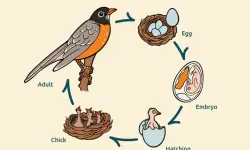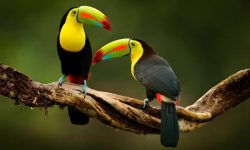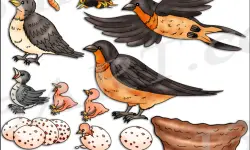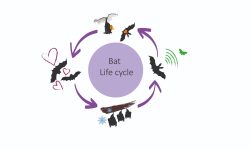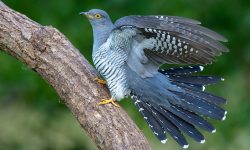Penguins are flightless birds famous for their tuxedo-like appearance and their ability to survive in diverse environments. While many people associate them with icy Antarctica, penguins can be found in a range of climates—from sub-zero tundras to warm equatorial islands. This article explores the 18 recognized penguin species, highlighting their unique traits, habitats, and the conservation issues they face.
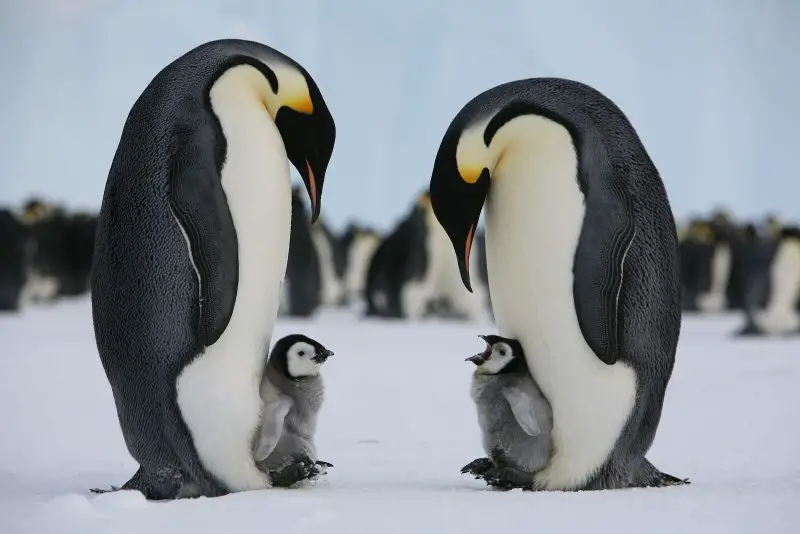
Penguins of the Antarctic and Subantarctic Regions
Emperor Penguin (Aptenodytes forsteri)
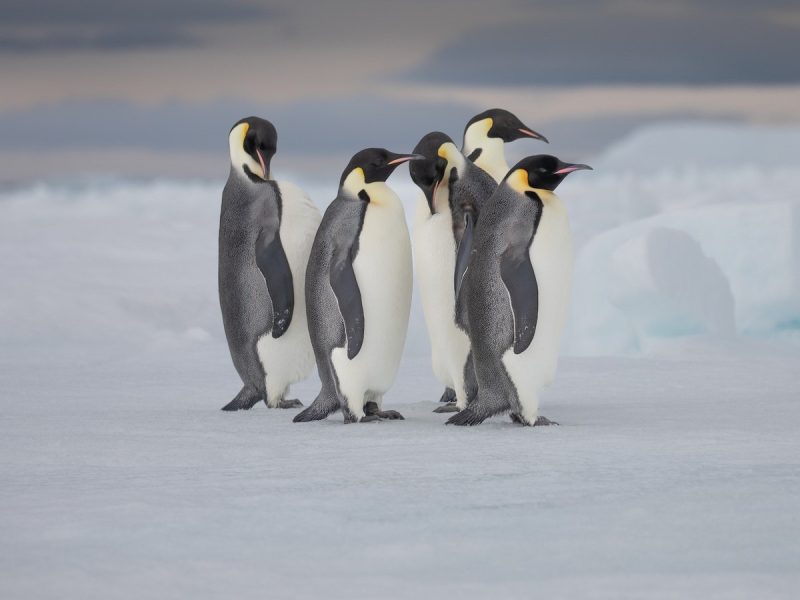
The Emperor Penguin is the largest and heaviest of all living penguin species, standing up to 1.2 meters (4 feet) tall and weighing between 20–40 kilograms (44–88 pounds). This species is endemic to Antarctica, meaning it is found nowhere else in the world. One of the most remarkable features of the Emperor Penguin is its unusual breeding behavior: it is the only penguin that breeds during the harsh Antarctic winter. During this time, males incubate a single egg on the tops of their feet, covered by a flap of skin called the brood pouch, while enduring temperatures that can fall below –60°C (–76°F) and winds over 200 km/h (124 mph). Emperor Penguins primarily feed on fish, but they also consume squid and krill, diving to depths that can exceed 500 meters (1,640 feet) for several minutes at a time.
King Penguin (Aptenodytes patagonicus)
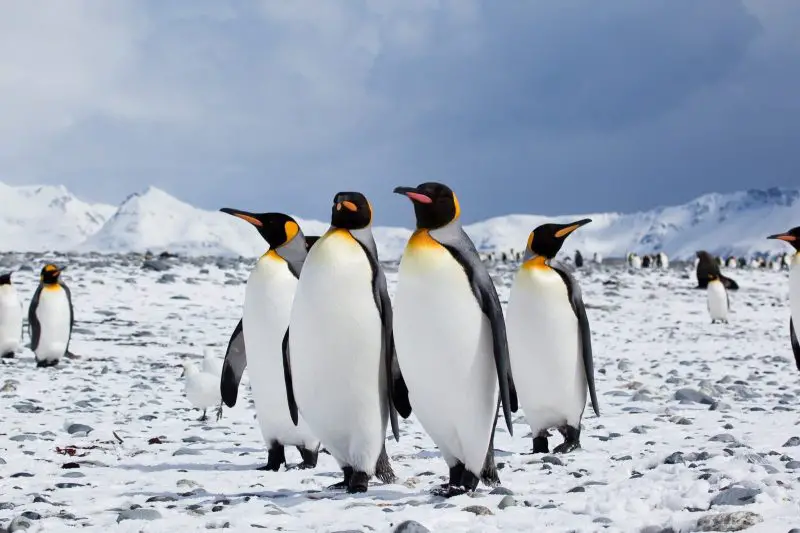
Slightly smaller than the Emperor Penguin, the King Penguin is the second largest penguin species, reaching around 90 cm (3 feet) in height. It is found in large colonies on sub-Antarctic islands such as South Georgia, the Falklands, and the Kerguelen Islands. King Penguins are notable for their bright orange patches on the sides of the neck and the base of the beak. Unlike most birds, they do not build traditional nests. Instead, they incubate a single egg on top of their feet, keeping it warm under a brood pouch. Their breeding cycle lasts over 14 months, and they often have only one chick every two years. Their diet consists mainly of lanternfish and squid, and they can dive to depths of over 300 meters (980 feet).
Adélie Penguin (Pygoscelis adeliae)
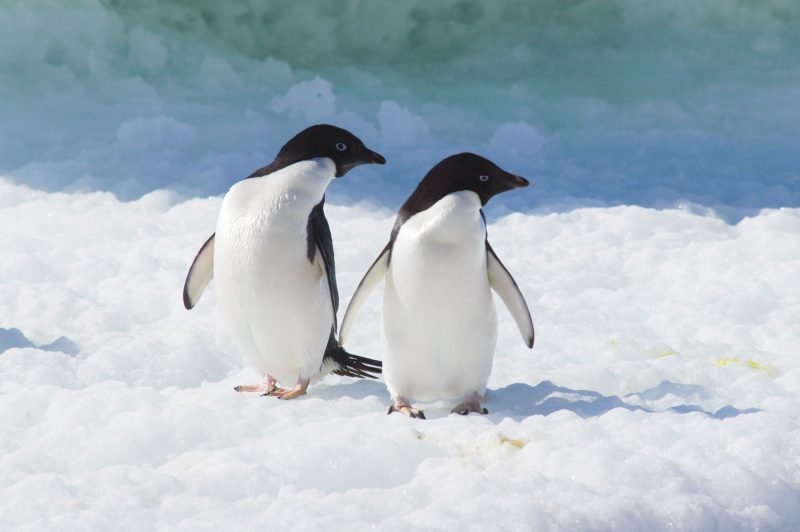
The Adélie Penguin is a medium-sized species known for its distinctive white ring around the eye and black head and back. These penguins are distributed all along the Antarctic coastline and nearby islands. They are highly adapted to cold environments and are famous for their aggressive and bold behavior, especially during the breeding season. Adélies build their nests from pebbles, which they often steal from neighboring pairs, and they fiercely defend their nesting territory. These penguins feed mainly on krill and small fish, making shallow dives up to 150 meters (490 feet). Because of their abundance and accessibility, Adélie Penguins are one of the most studied penguin species in scientific research.
Chinstrap Penguin (Pygoscelis antarcticus)
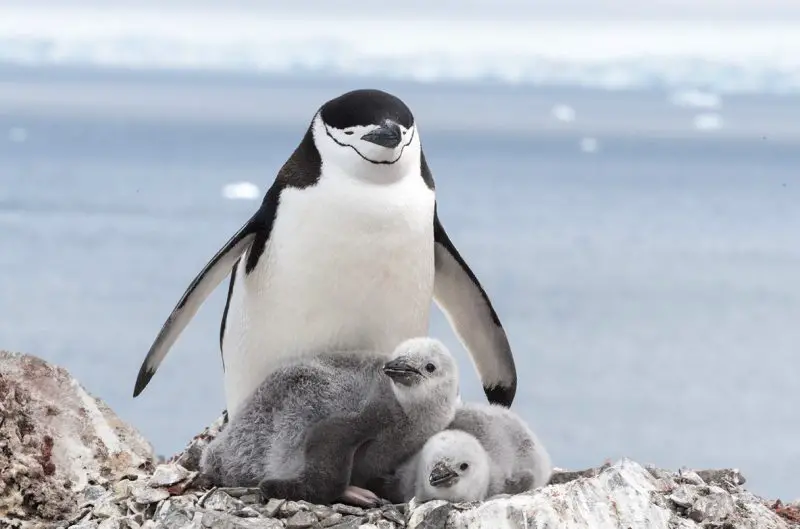
Easily identified by the thin black line that runs under their chin, Chinstrap Penguins have a striking appearance and a loud, braying call. They are found on islands and shores around the Antarctic Peninsula, including the South Shetland Islands and South Orkney Islands. Chinstraps breed in large, dense colonies, sometimes numbering in the hundreds of thousands. They nest on rocky, exposed slopes and use small stones to build nests that help drain meltwater. These penguins are highly vocal and territorial during breeding season. Their diet mainly consists of krill, although they will also eat fish and other small crustaceans.
Gentoo Penguin (Pygoscelis papua)

Gentoo Penguins are among the most easily recognizable penguins due to their bright orange beak and white patch above each eye that extends across the top of their heads. They are found on sub-Antarctic islands such as the Falklands, South Georgia, and the Kerguelen Islands. Gentoo Penguins are known as the fastest swimmers among all penguin species, capable of reaching speeds of 36 km/h (22 mph) underwater. They build circular nests out of stones, often reusing the same site year after year. Their diet varies depending on location but typically includes krill, squid, and fish. They prefer areas with easy access to the ocean for feeding.
Macaroni Penguin (Eudyptes chrysolophus)
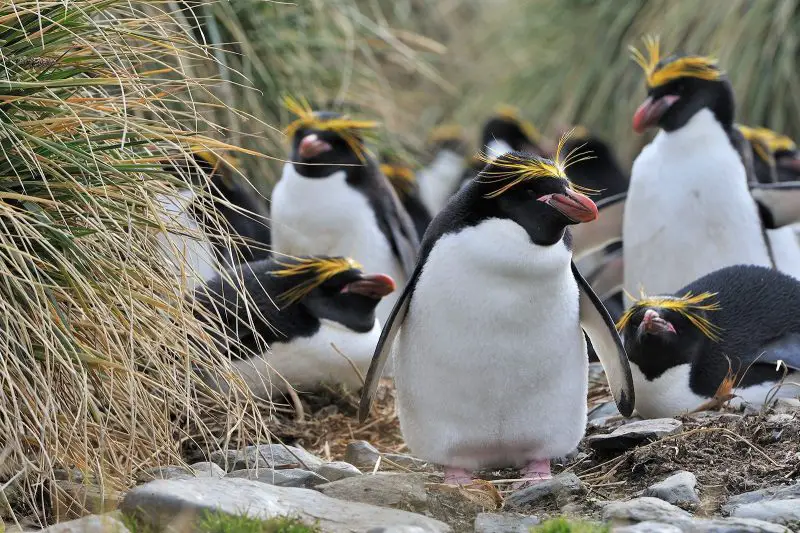
The Macaroni Penguin is one of the most visually distinctive penguins due to its bright yellow-orange feather crests that extend from the center of the forehead to the back of the head. It is found on sub-Antarctic and Antarctic Peninsula islands, including South Georgia and the South Sandwich Islands. Macaroni Penguins are the most abundant penguin species, with estimated global populations in the tens of millions. They form large breeding colonies on rocky, coastal cliffs and slopes. Their diet consists mainly of krill, but they also eat small fish and squid. Despite their high numbers, population declines in some regions have raised conservation concerns.
Royal Penguin (Eudyptes schlegeli)
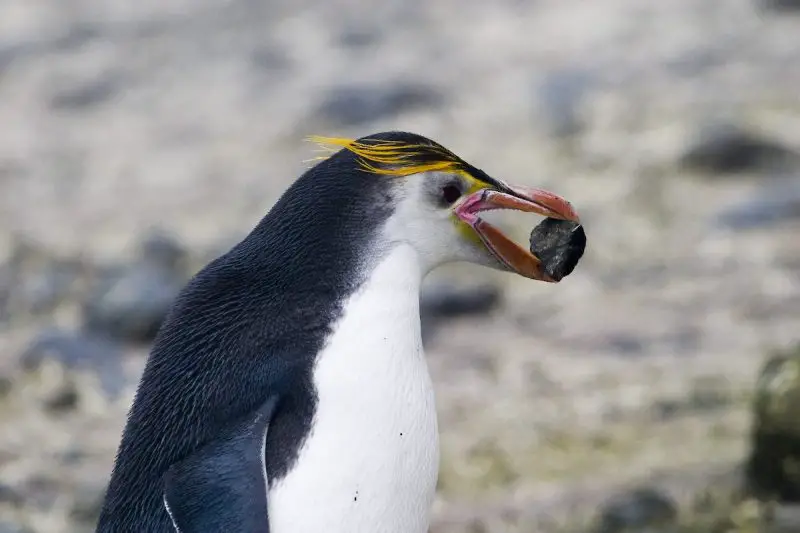
Closely related to the Macaroni Penguin, the Royal Penguin also has a yellow crest, but it differs by having a mostly white face, giving it a more pale and clean-cut appearance. This species is endemic to Macquarie Island and nearby islets, making its geographic range extremely limited. Like other crested penguins, Royal Penguins breed in dense colonies and build nests using pebbles and vegetation. They feed mainly on krill and fish, diving up to 150 meters (490 feet). Due to their restricted breeding range and vulnerability to environmental changes and invasive species, they are currently listed as vulnerable.
Rockhopper Penguin (Eudyptes chrysocome)
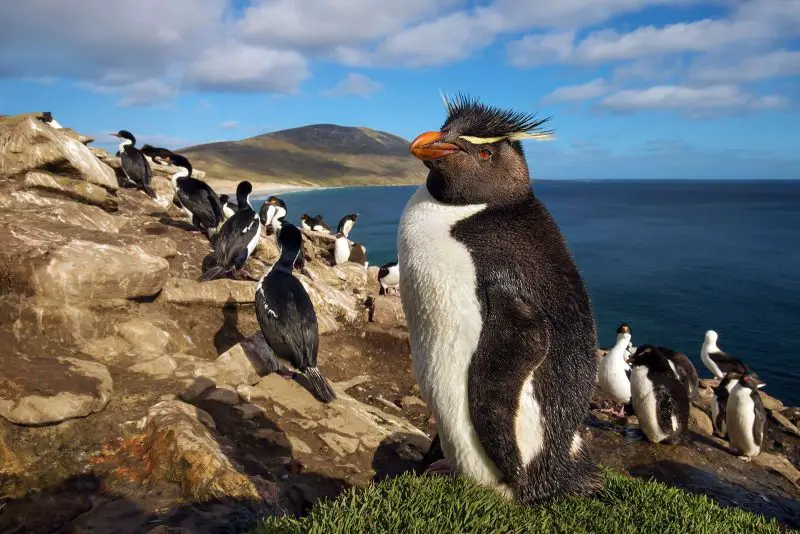
The Rockhopper Penguin is divided into two recognized subspecies: Northern Rockhopper and Southern Rockhopper. Both types are known for their spiky yellow eyebrows, red eyes, and characteristic hopping movement over rocky terrain. They are among the smallest penguin species, standing about 50 cm (20 inches) tall. These birds inhabit rocky shorelines of sub-Antarctic islands, where they build nests in crevices or under vegetation. Rockhoppers are excellent climbers and swimmers, feeding mainly on krill, squid, and small fish. While once very abundant, some populations have seen significant declines, likely due to climate change and overfishing.
Southern Rockhopper Penguin (Eudyptes chrysocome chrysocome)
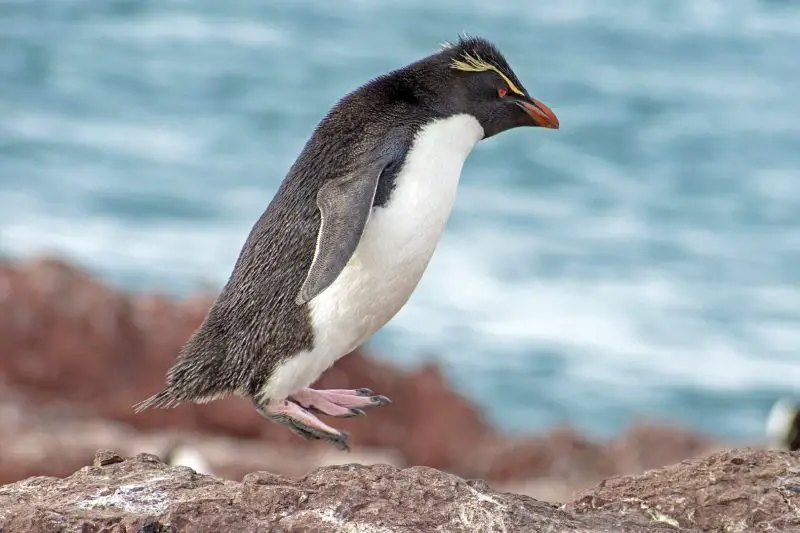
The Southern Rockhopper is found on islands in the South Atlantic and southern Indian Oceans, including the Falklands, southern Chile, and Heard Island. It is the more numerous subspecies and slightly smaller than its northern counterpart. Southern Rockhoppers breed in large colonies on steep, rocky coastlines, often in extremely windy conditions. Their nests are simple and made of stones or vegetation. They rely heavily on krill and small fish for food and are known for their resilience in challenging environments. However, they are currently considered vulnerable due to declining numbers caused by environmental pressures.
Northern Rockhopper Penguin (Eudyptes moseleyi)
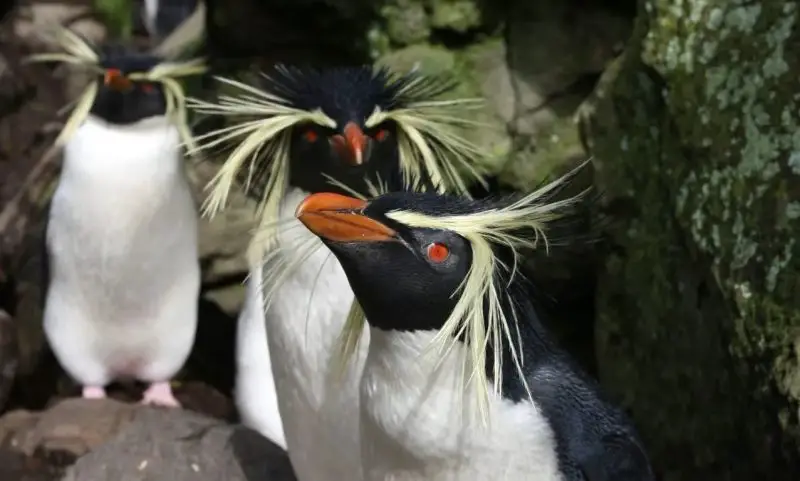
The Northern Rockhopper Penguin is found on remote islands in the South Atlantic Ocean, such as Tristan da Cunha, Gough Island, and Amsterdam Island. It differs from the southern subspecies by having longer crest feathers and a more robust body. Northern Rockhoppers are critically endangered, with steep population declines over the last few decades. The primary threats include climate change, overfishing, marine pollution, and limited habitat availability. Conservation programs are underway to monitor breeding populations and reduce human impact on their fragile island ecosystems.
Penguins of Temperate and Tropical Climates

Fiordland Penguin (Eudyptes pachyrhynchus)
The Fiordland Penguin, also known as the Fiordland Crested Penguin, is native to the southwestern coasts of New Zealand’s South Island and several surrounding islands. Unlike most penguins that prefer open landscapes, this species is shy and reclusive, often choosing to nest in dense temperate rainforests, rocky caves, and thick underbrush. It is easily recognized by its thick yellow eyebrows that sweep back from the eyes, forming striking crests. Fiordland Penguins feed mainly on fish, squid, and krill, hunting close to shore. Their population is declining due to threats like introduced predators, habitat disturbance, and fishing bycatch, earning them a “Vulnerable” status on the IUCN Red List.
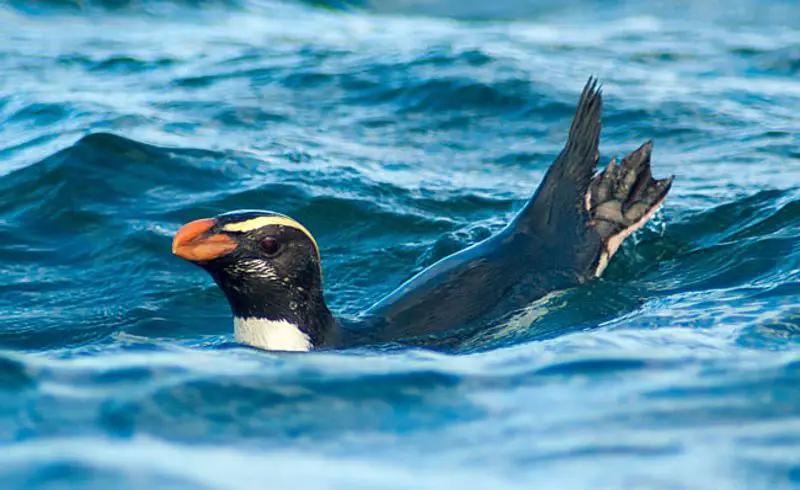
Snares Penguin (Eudyptes robustus)
The Snares Penguin is found exclusively on the Snares Islands, a small group of uninhabited islands south of New Zealand. This species is medium-sized, with a stocky build and dense, waterproof plumage. It has thick yellow crests similar to those of other crested penguins, but what sets it apart is its robust body and pink skin at the base of the beak. Snares Penguins breed in dense colonies, often under the forest canopy or in scrubby vegetation. They are highly vocal and territorial during the breeding season. Their remote habitat has helped protect them from many threats, but because of their limited range, they remain at risk from environmental changes, such as climate shifts or accidental human disturbance.
Erect-crested Penguin (Eudyptes sclateri)
The Erect-crested Penguin is one of the least studied and most enigmatic penguin species. It breeds primarily on the remote Bounty and Antipodes Islands, located to the southeast of New Zealand. This penguin is characterized by its tall, upright yellow crests, which stand stiffly above the eyes. Adults can reach up to 60 cm (24 inches) in height. Due to the isolation of its breeding grounds and the difficulty of field research in those locations, very little is known about the species’ behavior, reproductive patterns, or foraging habits. What is clear is that their population has been declining, and they are currently listed as “Endangered”, largely because of their limited distribution and unknown population trends.
Yellow-eyed Penguin (Megadyptes antipodes)
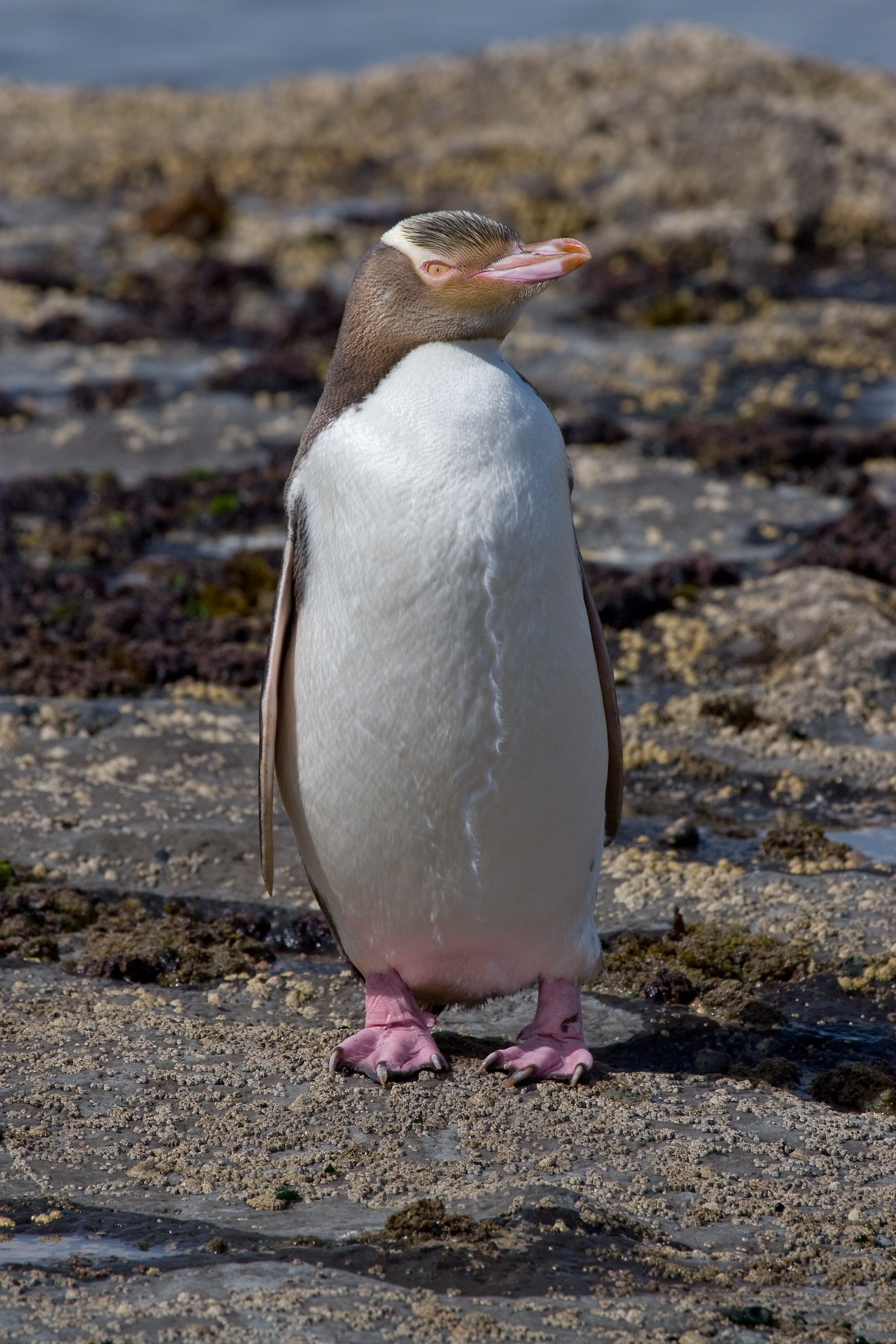
The Yellow-eyed Penguin is among the rarest and most endangered penguins in the world. Endemic to New Zealand’s South Island, Stewart Island, and sub-Antarctic islands, it stands out with its pale yellow eyes and a distinctive yellow band that runs from the eyes around the back of the head. Unlike social penguins that breed in colonies, Yellow-eyed Penguins are solitary nesters, choosing secluded forest or scrub areas for breeding. This makes them highly susceptible to habitat loss and degradation. They face major threats from introduced predators such as stoats, cats, and dogs, as well as diseases and human activity. Their conservation is a high priority in New Zealand, with several recovery and monitoring programs in place.
Little Penguin (Eudyptula minor)
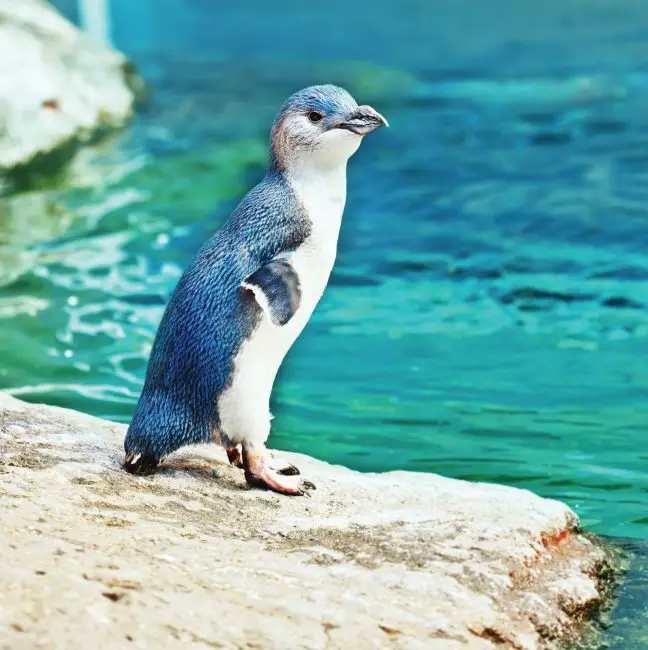
Also known as the Fairy Penguin, the Little Penguin is the smallest penguin species, reaching just 30–33 cm (12–13 inches) in height and weighing only 1–1.5 kilograms (2.2–3.3 pounds). It lives along the coasts of southern Australia and New Zealand, often nesting in burrows, under rocks, or in dense vegetation. These penguins are unique in that they are nocturnal on land, returning from the sea under the cover of darkness to avoid predators. Their diet consists of small fish, squid, and crustaceans, which they catch during short, shallow dives close to the shore. Little Penguins are the most commonly encountered species by humans due to their proximity to urban areas, and they are often featured in conservation efforts and ecotourism programs.
Penguins of the Equator
Galápagos Penguin (Spheniscus mendiculus)

The Galápagos Penguin is the only penguin species found naturally north of the equator. Endemic to the Galápagos Islands of Ecuador, this small species relies heavily on the cool waters of the Humboldt and Cromwell Currents, which bring nutrient-rich upwellings to an otherwise tropical region. These penguins are uniquely adapted to warmer climates, often seen sheltering in lava crevices or panting and extending their flippers to dissipate heat. They nest in rocky coastal caves and shaded areas to protect eggs and chicks from overheating. With a total population estimated to be fewer than 2,000 individuals, the species is classified as Endangered. It is extremely vulnerable to climate variability, especially El Niño events, which reduce food availability and disrupt breeding. Other threats include predation by introduced species, human disturbance, and disease outbreaks.
Humboldt Penguin (Spheniscus humboldti)
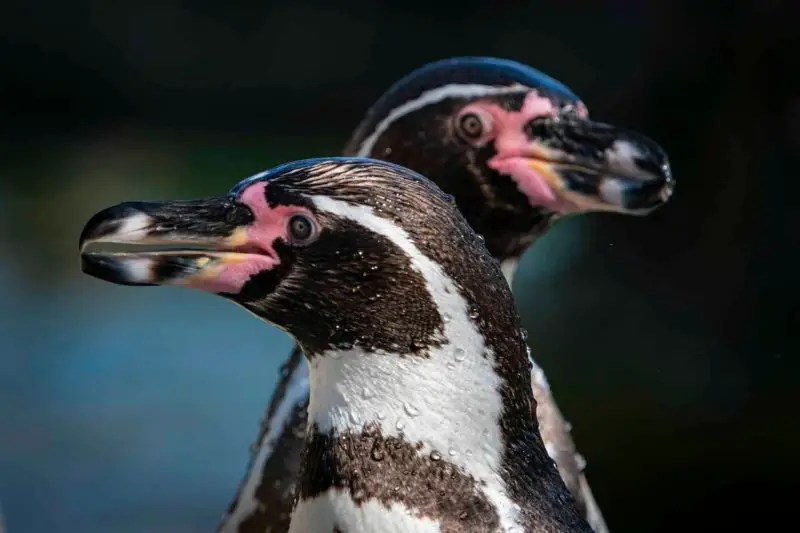
Named after the Humboldt Current that runs along the western coast of South America, the Humboldt Penguin inhabits coastal Peru and northern Chile, where the cold current allows it to thrive in an otherwise arid and warm climate. These penguins are medium-sized and marked by a single black horseshoe-shaped band across the chest and pink patches of bare skin around the eyes, which help regulate body temperature. Humboldt Penguins breed in rocky cliffs, guano beds, and natural caves, often returning to the same nesting site year after year. Their main diet consists of anchovies, sardines, and small schooling fish, which they catch during short, efficient dives. The species is currently listed as Vulnerable, facing serious threats from overfishing, habitat destruction, and climate-driven shifts in prey distribution. Historically, the guano trade also caused major declines by destroying nesting sites.
Magellanic Penguin (Spheniscus magellanicus)

Magellanic Penguins are native to the southern coasts of Argentina and Chile, as well as the Falkland Islands, where they form large breeding colonies. They are easily recognized by their distinctive two black bands across the chest and vocalizations that resemble braying donkeys. These penguins nest in burrows dug into soil, under shrubs, or in sheltered areas, which protect chicks from predators and extreme temperatures. They are highly migratory and may travel thousands of kilometers northward during the non-breeding season, sometimes reaching as far as Uruguay and southern Brazil. Their diet mainly includes anchovies, sardines, squid, and crustaceans. While still numerous, with an estimated population of over one million breeding pairs, localized declines have been observed due to oil pollution, bycatch in fishing nets, and changes in prey availability. They are currently classified as Near Threatened.
African Penguin (Spheniscus demersus)
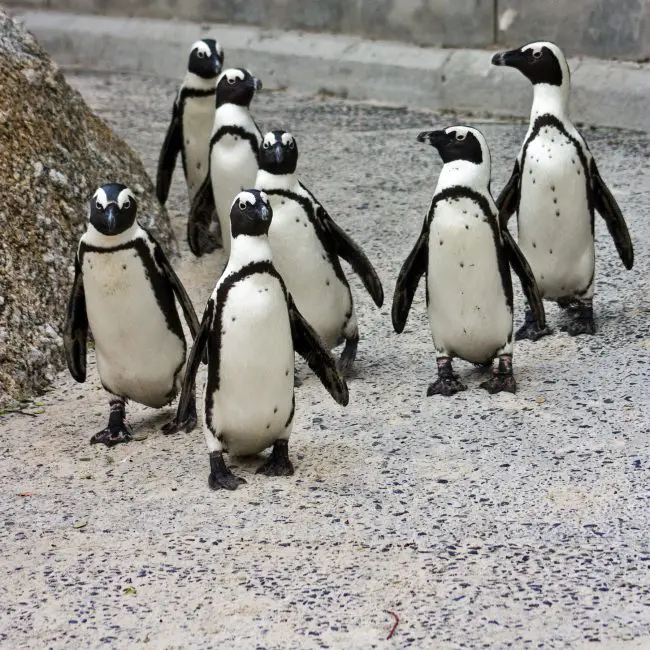
The African Penguin, also known as the Jackass Penguin due to its loud, donkey-like braying, is the only penguin species native to the African continent. It inhabits the southwestern coasts of South Africa and Namibia, where it nests on offshore islands and, increasingly, on the mainland. These penguins have a single black chest band and pink skin patches above the eyes, which help regulate body heat. They are monogamous and typically nest in burrows, scrapes in the sand, or under vegetation, with both parents sharing incubation and chick-rearing duties. African Penguins rely heavily on sardines and anchovies, making them particularly susceptible to changes in fish distribution caused by overfishing and ocean warming. The species is currently listed as Endangered, with a population decline of over 60% in recent decades. Major threats include oil spills, nesting habitat destruction, overfishing, and human disturbance, though active conservation efforts are underway to reverse these trends.
Conclusion
Penguins are a remarkable example of evolutionary adaptation and ecological diversity. Spanning from the frigid ice shelves of Antarctica to the temperate shores of New Zealand and even the tropical Galápagos Islands, these birds have evolved an incredible range of physical traits, behavioral strategies, and reproductive habits to survive in some of the planet’s most challenging environments.
With 18 distinct species, each occupying its own ecological niche, penguins reflect the complexity and fragility of marine and coastal ecosystems. However, many of these species are under increasing threat from climate change, overfishing, habitat loss, pollution, and human disturbance. Some, like the African Penguin and Galápagos Penguin, have experienced dramatic population declines in recent decades and are now listed as endangered.
Conservation actions—such as marine protected areas, sustainable fisheries management, and habitat restoration—are essential to ensure the survival of these iconic seabirds. Public awareness and global cooperation play a crucial role in protecting not just individual species, but also the ocean systems they depend on.
By learning about the unique characteristics of each penguin species and the pressures they face, we gain not only a deeper appreciation for their resilience but also a clearer understanding of our responsibility in preserving the biodiversity of our planet’s oceans. Penguins do more than charm us with their waddles and underwater agility—they serve as sentinels of ocean health, reminding us of the delicate balance between life and environment.

